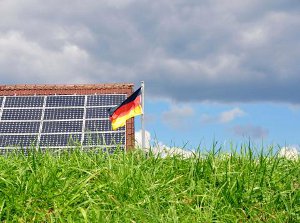Germany
Green growth in action: Germany
|
Germany, the third largest economy in the OECD, has been proactive in developing ambitious environmental policies during the last decades, both nationally and internationally. The country’s strong environmental framework makes it not only a pioneer in environmental protection and sustainable development, but also constitutes a good example on how a cleaner low-carbon economy is compatible with growth. In 2002, Germany adopted its National Strategy for Sustainable Development, making sustainability a guiding principle for national policies. The Strategy is underpinned by concrete targets and sustainability indicators, which are evaluated in regular progress reports. Germany also launched major cross-cutting initiatives on biodiversity, climate change, energy and resource efficiency. |
©iStockphoto/Thinkstock |
In its Energy Concept, for example, Germany has formulated guidelines for an environmentally sound, reliable and affordable energy supply. The key elements of this are expanding the use of renewable energies and increasing energy efficiency. In electricity production, Germany aims to raise the share of renewables from 17% today to more than 80% in 2050, while completely phasing out electricity production from nuclear power plants by 2022. Greenhouse gas (GHG) emissions would be cut by 40% by 2020 and at least 80% by 2050. In the field of energy efficiency, Germany intends to reduce primary energy consumption by 20% by 2020 and 50% by 2050 compared with 2008. Overall, the Energy Concept contains more than 100 specific measures in the fields of electricity, heat and transport.
Another example is the recently adopted German Resource Efficiency Programme, a comprehensive programme addressing the sustainable use of raw materials. Germany’s goal is to decouple economic growth as far as possible from resource use, both to reduce the burden on the environment and to strengthen the sustainability and competitiveness of its economy. The programme includes, for example, efficiency advice for small and medium-sized enterprises, supporting environmental management systems, integrating resource aspects into technical standardisation processes, placing greater emphasis on resource-efficient products and services in public procurement, strengthening voluntary product labelling and certification systems and enhancing closed cycle management.
These and other ambitious environmental programmes helped Germany to significantly increase the energy, resource and carbon efficiency of the economy. According to the 2012 OECD Environmental Performance Review, Germany has achieved one of the highest levels of resource productivity among OECD countries and is one of the few countries that achieved to reduce GHG emissions absolutely, while GDP continued to grow for much of the 2000s.
At the same time, Germany’s green growth policies have been an important engine for environmental innovation and the emergence of an internationally competitive environmental goods and services (EGS) sector. The Federal Statistical Office estimated the turnover of the EGS sector to be about 2% of GDP in 2009, primarily due to the development of renewable energy sources, driven by a feed-in-tariff system that guarantees renewable energies a sale price and a preferential access to the grid. Given the expected rise of global markets for solar thermal energy, photovoltaics and wind power in the next decade, EGS will serve as an important source of economic growth and jobs in Germany.
Sources
- Energy Concept, Federal Ministry for the Environment, Nature Conservation and Safety (2010)
- German Strategy for Adaptation to Climate Change, Federal Ministry for the Environment, Nature Conservation and Safety (2008)
- Integrated Energy and Climate Programme, Federal Ministry for the Environment, Nature Conservation and Safety (2007)
- National Strategy on Biological Diversity, Federal Ministry for the Environment, Nature Conservation and Safety (2007)
- National Strategy for Sustainable Development, Federal Government (2002)
- Progress Report on the National Strategy for Sustainable Development, Federal Government (2008)
- Resource Efficiency Programme, Federal Ministry for the Environment, Nature Conservation and Safety (2012)
OECD publications
- OECD Environmental Performance Reviews of Germany 2012, including a chapter on green growth
- OECD Economic Survey of Germany 2012, including a chapter on exploiting new sources of growth in climate change mitigation
Related Documents
